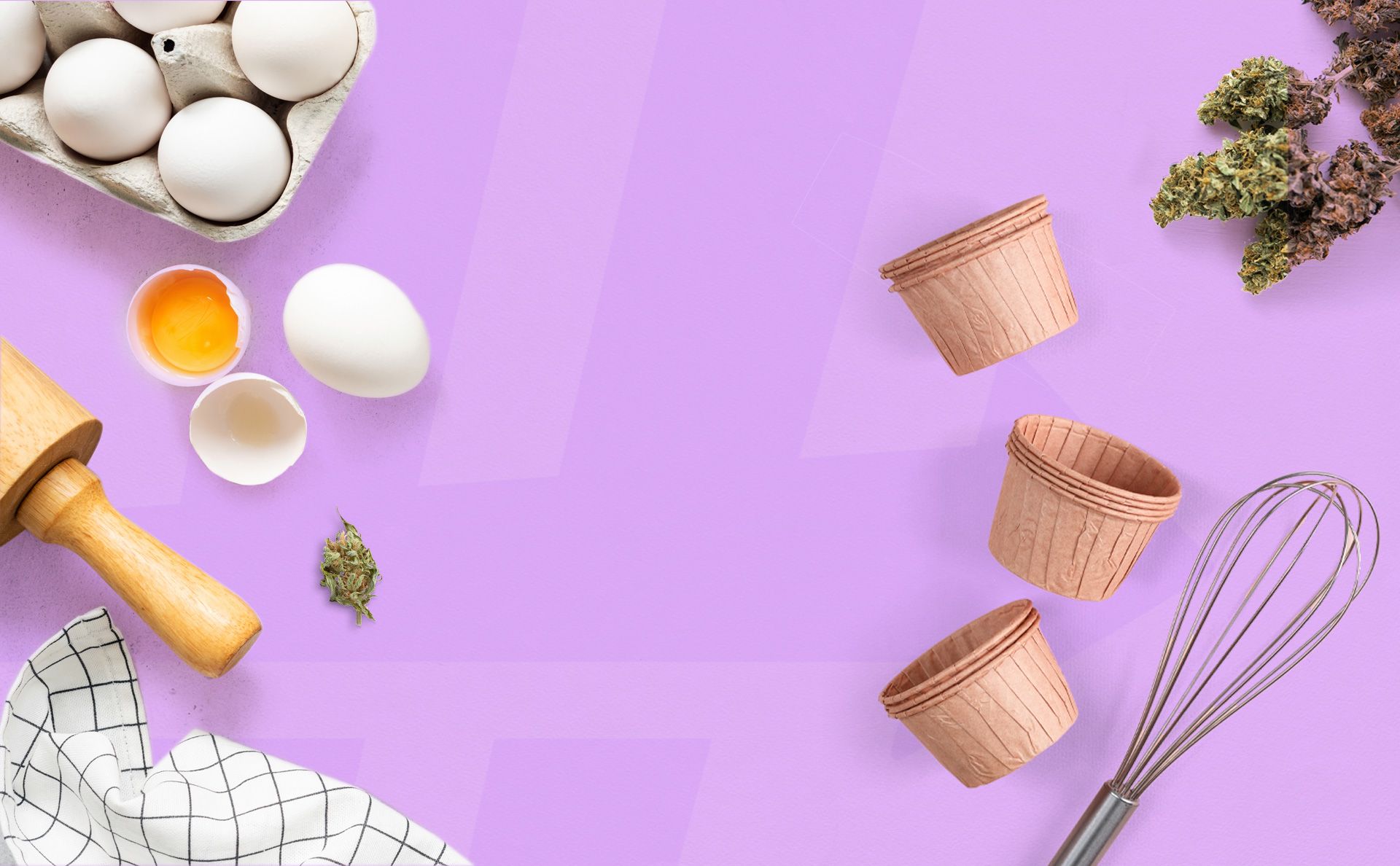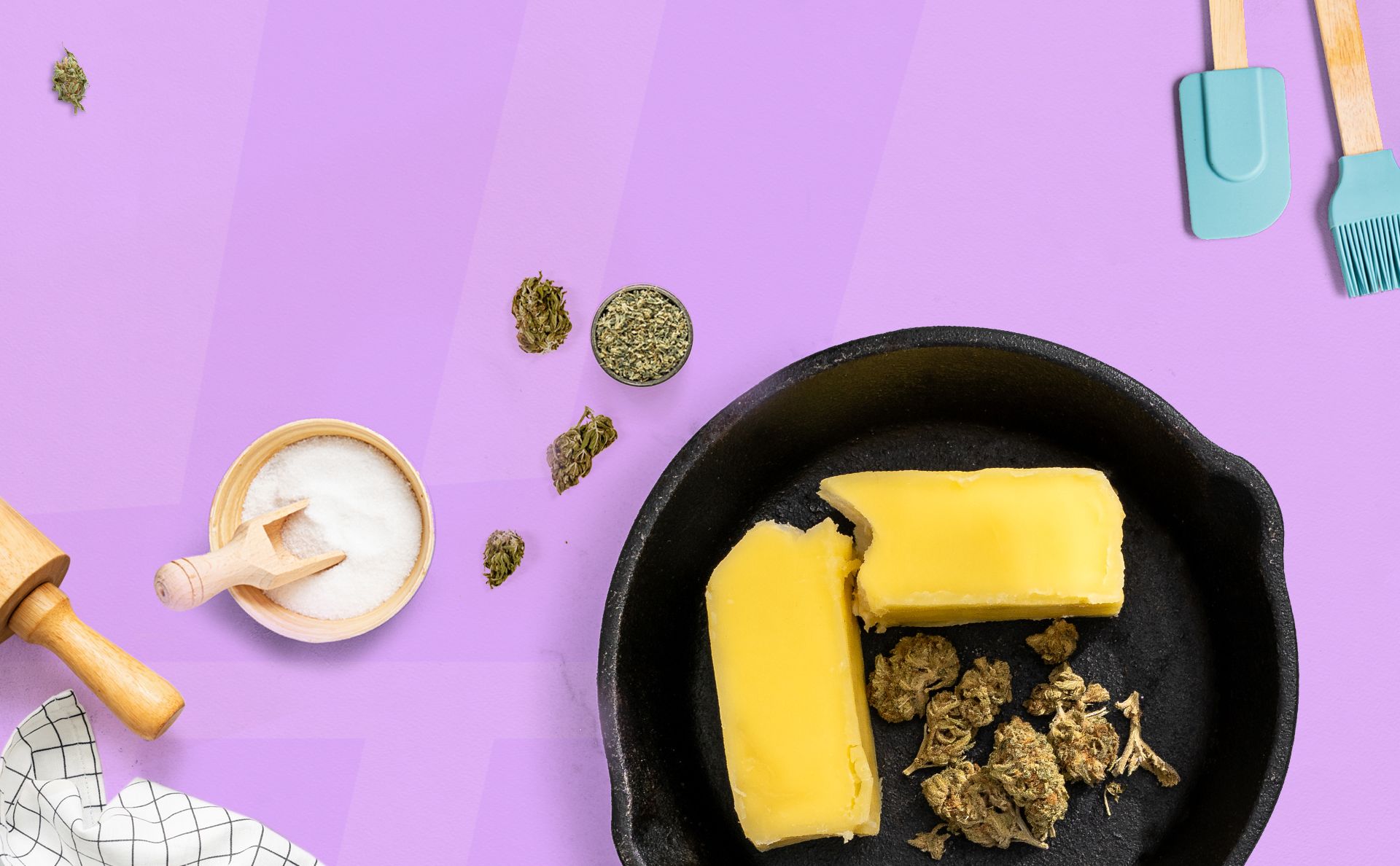Baking with Cannabis
In this chapter of our cooking with cannabis guide, we cover some of the basics of baking with the plant. We also discuss the difference between baking and cooking.

While cooking with cannabis and eating infused foods is a broad range, baking with it is a little more limited. However, you are most certainly not limited to the age-old brownies. That said, cannabis brownies are typically the best known edible at this point, but baking with cannabis can go well beyond brownies.
As is the case with sautéing and slow cooking, you can simply use your cannabis butter or oil for just about any baking recipe you’d like to try. Use your canna-butter at a 1:1 ratio with just about any recipe you can think of.
We do recommend against basting or roasting in your oven as a novice cannabis baker. At high heat, you risk burning the THC in your cannabis before it’s finished. With baked goods, however, the THC is insulated by the ingredients such as milk, eggs, brownie mix, and so on.
Cooking VS Baking: What is the Difference?
When most cannabis enthusiasts say they are cooking with the herb, it is often assumed that you'll be using the oven to decarb. Baking with cannabis is a more specific thing, as is the case with preparing food in general.
Many chefs have said that cooking is like artwork, while baking is more like science. The ability to improvise and guesstimate ingredient amounts is much more lenient with frying, sauteing, or steaming your food. The ability to improvise and guesstimate ingredient amounts is much more lenient with frying, sautéing, or steaming your food than it is with baking.

With ingredients for baking, you must be precise, including the correct dosage of your cannabis. For an in-depth look at the effects of various milligram doses, check out our handy dosage milligram breakdown section of the Edibles, Beverages & Tinctures chapter of our Consumption Methods Guide.
Mastering Decarbing
Whether you are cooking with cannabis or baking with it, mastering the art of decarboxylation is going to be your most important objective. For a more in-depth look at decarboxylation and how to do so at home, be sure to check out chapter 3 of this Cooking Guide.
Your Canna-Baking Journey
The more skills you learn in the kitchen, the better home cook you will be, and baking with cannabis is no different. Learning how to precisely measure your recipe ingredients as well as your cannabis is a fun challenge for many home canna-bakers.
As you’ll no doubt hear again on our platform, every cannabis consumer is different in their preferences, how they feel effects, and their taste buds. Low and slow is the way to go: taste a few milligrams of your baked edible creation, and then apply the newly acquired skills to the rest of your canna-cooking experiences.
What We Learned: Baking with Cannabis
Baking is one of the most delicious and rewarding ways to consume cannabis. While it’s a skill that takes a while to develop, doing so is worth it. Here’s what we learned in the Baking with Cannabis chapter:
- You can simply use your cannabis butter or oil for just about any baking recipe you’d like to try.
- Use your canna-butter at a 1:1 ratio with just about any recipe you can think of.
- You risk burning the THC in your cannabis at high heat before it’s done.
- The ability to improvise and guesstimate ingredient amounts is much more lenient with frying, sauteing, or steaming your food than it is with baking.
- Mastering the art of decarboxylation is going to be your most important objective.
Ready for our next chapter? Answer the question below and keep moving forward.
Test your knowledge, track your progress and earn your badge.
For cannabis butter or oil, what is the best ratio?